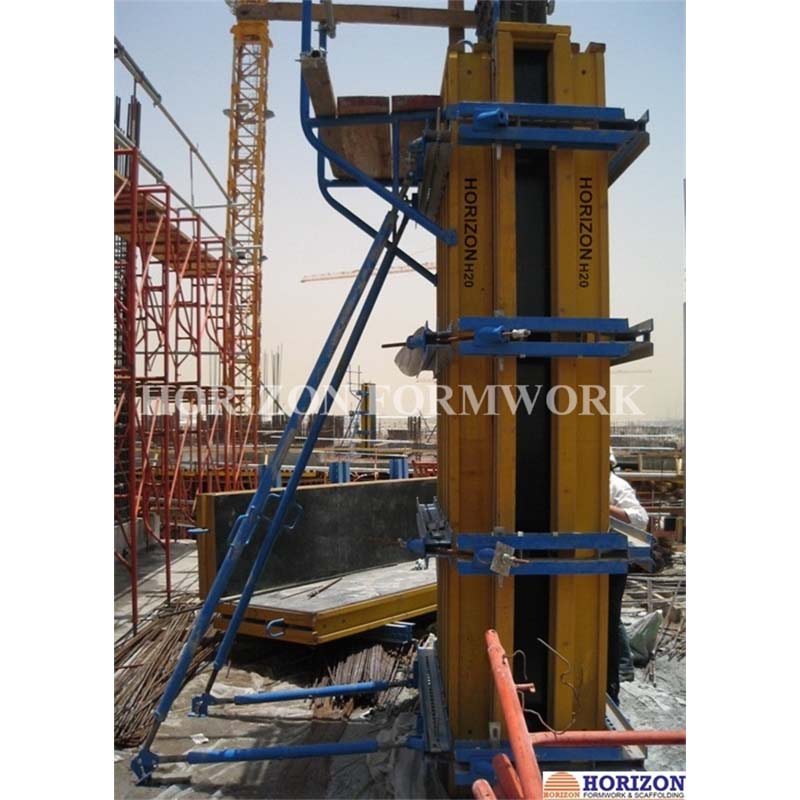Ago . 06, 2024 06:25 Back to list
Innovative Plastic Formwork Solutions for Efficient Column Construction and Enhanced Structural Support
The Rise of Plastic Formwork for Columns A Sustainable Solution in Construction
In the construction industry, the quest for efficiency, cost-effectiveness, and sustainability has led to innovative solutions that cater to modern demands. One such advancement is the use of plastic formwork for columns. This technology has emerged as a reliable alternative to traditional materials, enhancing the way structures are formed, particularly in vertical constructions like columns.
What is Plastic Formwork?
Plastic formwork is designed from high-density polyethylene or similar materials, known for their durability and lightweight nature. Unlike traditional formwork made from wood or metal, plastic formwork offers several advantages that make it a preferred choice for contractors. It comes in prefabricated panels that are easily assembled on-site, streamlining the construction process.
Advantages of Plastic Formwork for Columns
1. Weight and Efficiency One of the most significant benefits of plastic formwork is its reduced weight compared to metal and timber. This quality not only makes it easier to handle and install but also reduces labor costs, as fewer workers are required to transport and assemble the panels.
2. Reusability Plastic formwork is exceptionally durable, allowing it to be reused multiple times without the deterioration common in wooden or metal alternatives. This characteristic makes it a cost-effective option over the long term, as the initial investment can be spread over numerous projects.
3. Water Resistance Unlike wooden formwork, which can absorb water and become damaged, plastic formwork is resistant to moisture. This feature prevents any warping or degradation, ensuring that the formwork maintains its integrity for precise column shapes and finishes.
plastic formwork for column company

4. Sustainable Choice With an increasing emphasis on sustainable construction practices, plastic formwork aligns with environmental goals. Its long lifespan reduces the need for frequent replacements, and many manufacturers are focusing on creating products from recycled materials, which minimizes waste.
5. Smooth Finish The surface of plastic formwork is smooth and allows for a clean finish on concrete columns. This quality eliminates the need for excessive post-construction finishing work, reducing labor and material costs further.
6. Adaptability Plastic formwork can be easily customized to accommodate various column shapes and sizes. This flexibility allows architects and engineers to explore creative designs without being constrained by the limitations of traditional materials.
Challenges and Considerations
While plastic formwork offers numerous advantages, it is essential to consider potential challenges. The initial cost can be higher than traditional materials, although the long-term savings often outweigh this factor. Moreover, the compatibility of plastic with specific concrete mixes needs to be evaluated to ensure optimal performance.
Conclusion
The use of plastic formwork for columns represents a significant advancement in construction technology. As the industry moves towards more sustainable and efficient practices, plastic formwork stands out as a versatile, cost-effective, and environmentally friendly solution. Embracing such innovations not only serves the immediate needs of the construction sector but also contributes to the broader goals of sustainability and efficiency in building practices. As more companies recognize the benefits of plastic formwork, its adoption is likely to increase, setting a new standard for the future of construction.
-
Ringlock Scaffolding: Strong, Safe & Efficient Solutions
NewsAug.27,2025
-
OEM Column Formwork: Circular, Curved & Inclined Solutions
NewsAug.26,2025
-
Premium Scaffolding Jacks: Stable, Adjustable & Durable
NewsAug.25,2025
-
OEM Wall Formwork & Shuttering: Flexible & Curved Solutions
NewsAug.24,2025
-
Adjustable Heavy Duty Props for Slab Formwork | Strong & Reliable Support
NewsAug.23,2025
-
Adjustable Heavy Duty Props for Slab Formwork - Strong & Safe Support
NewsAug.22,2025